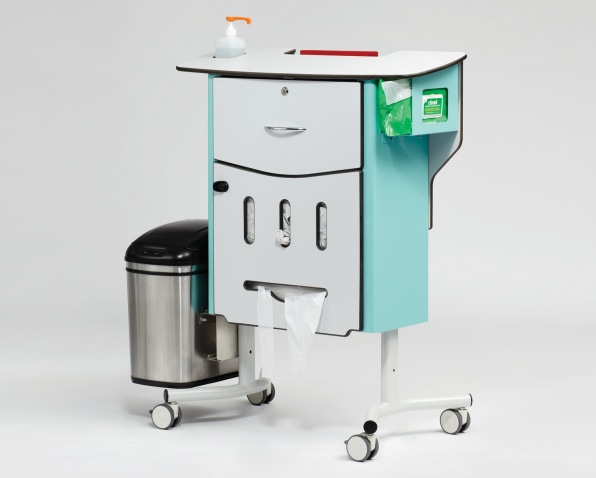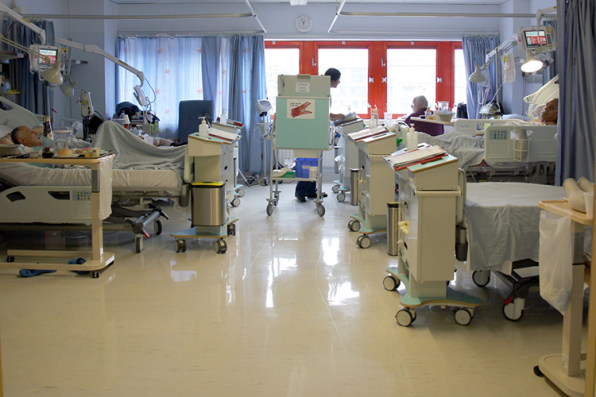Logix Designer Compare Tool Error
In the 1970s, an engineer named Jeffrey Cooper noticed how poorly much of the equipment used by anesthesiologists was designed. Turning a dial clockwise on some machines decreased anesthetic concentration, for instance, while the same clockwise twist on others increased it. Cooper's subsequent analysis of "preventable anesthesia mishaps" inspired new equipment and procedures that helped reduce the anesthesia death rate to 1 in 200,000–about the same risk as an asteroid hitting Earth.
Anesthesiology notwithstanding, preventable medical errors remain a major problem in hospitals and health care settings around the world. In a landmark report from 1999, the Institute of Medicine estimated that up to 98,000 people a year may die from medical errors in the United States. The report attracted lots of attention but didn't result in much progress. A 2010 follow-up report in the New England Journal of Medicine found that the medical mistake rate remains stubbornly high.

Fortunately, the search for solutions remains equally vigorous. During a three-year project from 2008 to 2011, a research team in England approached the problem with the same appreciation for design held by Jeffrey Cooper. The diverse group–consisting of designers, clinicians, psychologists, and human factors experts–studied medical mistakes with an eye toward producing devices that could reduce them. They called the project DOME, short for "designing out medical error."
The lead designer of DOME was Jonathan West of the Helen Hamlyn Centre for Design in London. West tells Co.Design that he initially thought there'd be one or two glaring areas for improvement that could be tackled in a couple big designs. He quickly realized, though, while shadowing doctors and nurses at the hospitals of the Imperial College of London, that what makes the problem so persistent is that it's extremely complex.
"It's not like an airplane falling out of sky or a nuclear power plant exploding–there's no one big thing," West says. "The process is different for each patient, so the process can go wrong in unique ways, which makes it very hard to tackle in terms of design."

Faced with such a nuanced problem, the DOME researchers had to be very methodical. First they shadowed medical workers inside patient rooms. After dozens of hours of observation, they identified high-risk health care processes and analyzed them for critical points of failure. From there they crafted design briefs and enhanced them during focus groups with various experts. The end result was a suite of prototypes meant for real-world testing.
One of these prototypes ultimately became a device called the CareCentre. During patient observations, the DOME team noticed practitioners often had to hunt for hand sanitizer, gloves, and aprons. Many had to carry around bins to dispose of needles. Medication cabinets were often blocked or located far from the bedside. And there wasn't always an easy place to scribble notes into a patient chart. Each of these problems is fraught with the potential for a preventable medical error.
The CareCentre serves all these needs in a single, free-standing station that can be situated at the foot of any patient's bed–complete with hand gel, gloves and aprons, drug locker, waste and needle bins, chart surface, and storage slot. West and colleagues put the device through a week-long randomized trial on surgical wards. Compared to wards with standard equipment, those with the CareCentre had better hand hygiene, fresh glove and apron use, and old glove and apron disposal.
"I never thought it would do that well," says West. "The beauty of this design is we now have confidence that it works."
For all of DOME's success, significant barriers to reducing medical errors remain. Perhaps the biggest is convincing hospitals to use the new equipment. Medical manufacturer Bristol Maid is now producing the CareCentre for commercial distribution, and West says some newer hospitals have already signed on to use it. Others look at the bottom line, however, and don't realize that spending a little more on well-designed devices could save a lot more in patient complications.
At the same time, the project produced insights that should guide future efforts. One is simply encouraging medical professionals and designers to interact. Doing so gives practitioners a chance to see their old equipment "with fresh eyes," says West, and yet such collaborations are rare–despite fruitful partnerships going back to the days of Jeffrey Cooper. "I speak at a lot of medical conferences, and they never even considered that a designer could be involved in this sort of thing," says West. They should, stat.
Logix Designer Compare Tool Error
Source: https://www.fastcompany.com/3021303/using-good-design-to-eliminate-medical-errors
Posted by: williamswaregs.blogspot.com

0 Response to "Logix Designer Compare Tool Error"
Post a Comment